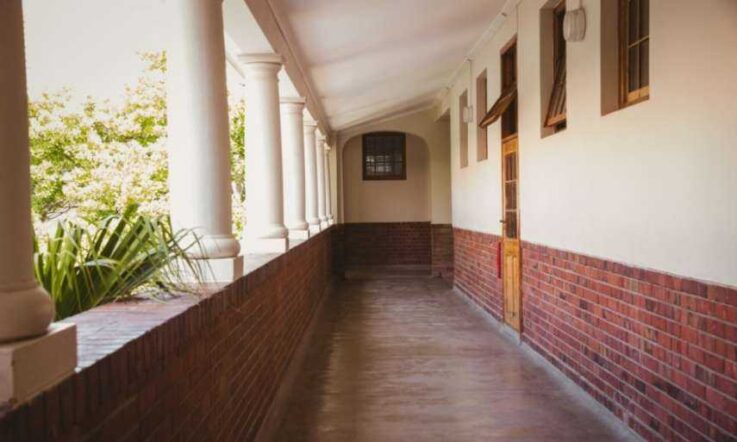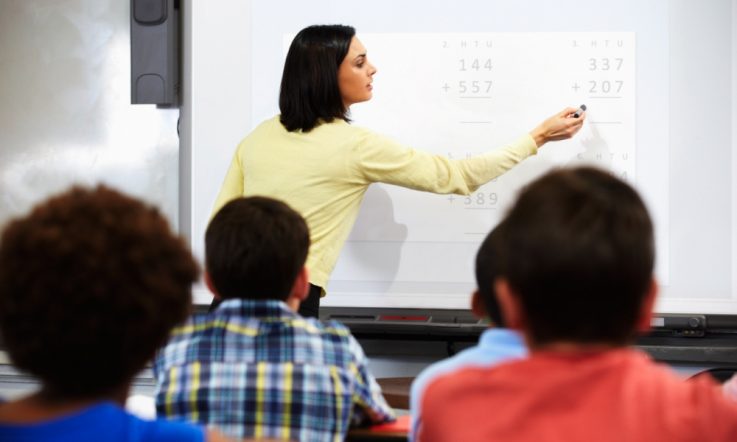When Western Australia's Butler College was established in 2013, the school leaders wanted to invest in creating a culture of continuous learning and development for all of its staff. This included teachers, education assistants, cleaners, gardeners and any other support staff.
In the second year of operation, an initiative to achieve this goal was formally introduced and involved 47 staff. It has since grown to almost 300 staff and 2000 students. The school leadership were keen to provide a supported approach that empowered all staff with a focus on developing, rather than managing performance.
The approach was supported by research on school-embedded professional learning (Wei et al., 2009). We know that including all staff in an improvement model assists in building collective efficacy (Hattie, 2016) and encourages staff to make an educational difference to their students over and above the educational impact of their homes and communities.
As an educational researcher who was qualified in the area of whole-school improvement and leadership training, I was employed by the school to introduce and embed the process. Initially, I was a casual consultant, but after two years of implementation I became a regular employee to meet the needs of the fast-growing staff numbers.
The whole-school improvement approach was titled ‘Creating a culture of development and continuous learning'. The focus has always been on supporting staff and with a vision and framework to embed a long-term, whole-school approach improving the skills and capacity of all staff (including non-teaching staff) through various means, including action learning projects and peer coaching.
The initiative was based on a framework underpinning its approach – developed by me as the education consultant – and included the following elements:
- Understanding of own role, self and impact
- Collaboration
- Capacity building
- Documenting evidence
- Frameworks (including policies and processes)
- Supportive accountability
- Supportive environment (leadership and colleagues)
- The framework was well supported by research on whole school improvement processes and developing staff (AITSL, 2011; Cole, 2012; Given et al., 2010; Leithwood et al, 2009; McNeil et al., 2009; Mizell, 2010; Hattie, 2015; Ojo, 2009).
Here is how it works in practice.
The teaching staff
The teaching staff were the first group to participate through a peer-to-peer coaching framework. Staff were paired with a colleague (outside their department) to meet on a regular basis, set professional teaching goals, embed actions in their classrooms and record outcomes.
Every year since 2013, new teachers have transitioned into the school and every new cohort of teachers has attended the in-school, professional development to learn the process of peer coaching. In 2017 there were 153 teaching staff that participated and will continue to participate in peer-to-peer coaching. All teaching staff meet with me at least once a year (in their peer partnership) to discuss goals and share progress. All goals are aligned with the Australian Professional Standards for Teachers (AITSL, 2011) and meet state teacher registration requirements, supporting teachers to meet these in an embedded and authentic manner.
The office staff
The office staff, including administrative officers, year coordinator admin officers and the school's Business Manager (known as the Manager, Corporate Services in Western Australia) participated in their own professional learning. They attended a series of workshops on developing and understanding themselves and their impact, which I conducted over a period of two years.
The learning included an action learning project where each staff member looked at an area within their scope of work and prepared actions to improve the area and report back to the group on a regular basis. Examples of projects included increasing awareness of processing leave, creating templates for administrative processes and increasing positive communication with parents. The facilitator created a Development Framework for School Office Staff – a developmental rubric of five criteria:
- Supports strategic direction
- Quality and service
- Communicates effectively (personal and professional interactions)
- Management of staff within the organisation
- Professionalism and personal development.
The cleaners and gardeners
The cleaners and gardeners met as a whole group on two occasions in 2016 to discuss their roles within the context and culture of a school. After the two meetings, it was decided that smaller group meetings in pairs/trios would work more effectively due to the limited use of spoken and written English of the staff, to offer greater opportunities for focused discussion.
The learning included practical sessions to learn about and discuss cleaning equipment and products led by the Head Cleaner and supported by the facilitator. The staff commented that they felt valued for being included in professional learning and part of a whole-school approach. The gardeners set goals for themselves to improve areas of the physical environment of the school to improve overall efficiencies for all staff and students. The Head Cleaner commented ‘the PD held last year for the cleaners was insightful and useful to help us understand our personal goals and how to achieve them in regards to the college and future endeavours'.
The education assistants
The education assistants (EAs) participated in professional learning that spanned over a year. Staff were taken through a self-development program that focused on each element of the Culture of Development framework and each EA developed their own action learning project (guided by the facilitator and supported by the teacher/s with whom they worked).
EAs were guided through learning, partnered with another EA for peer support and supported through their action learning projects. An example of an education assistant project was ‘Understanding challenging behaviours'. All projects were evaluated by EAs for the impact on students, the school and individual growth as an education assistant. All learning was documented in personal files and reviewed regularly by the facilitator throughout the course. A total of 50 EAs participated in smaller groups of approximately 15. The facilitator created a Development Framework for Education Assistants; a development rubric with five criteria, including:
- Communicates effectively (personal and professional interactions)
- Supports positive interactions and relationships with others (students, peers, parents and stakeholders)
- Professionalism and personal development
- Instructional support
- Supporting students with additional/special needs
Building collective efficacy
In our experience, this approach provided school leaders with an opportunity to consider whole-school improvement that is continuous and is embedded in the day-to-day work of staff, rather than one-off PD sessions via traditional professional learning. Developing staff requires long-term commitment and mechanisms to support staff in an authentic manner.
It highlights the encouragement of performance development versus performance management, and how to build a sustainable and proactive model that meets state and national requirements for teaching and performance management.
We found that including all staff in an improvement model builds collective efficacy and a positive culture for all staff to thrive, and students to be the recipients of this positivity.
References
AITSL. (2011). Australian professional standards for teachers. Retrieved from http://www.aitsl.edu.au/australian-professional-standards-for-teachers/standards/list.
Cole, P. (2012). Linking effective professional learning with effective teaching practice. Melbourne, Australia: PTR Consulting.
Given, H., Kuh, L., LeeKeenan, D., Mardell, B., Redditt, S. & Twombly, S. (2010). Changing school culture: Using documentation to support collaborative inquiry. Theory into practice, 49, 36-46.
Fullan, M. (2011.). Change leader: Learning to do what matters most. . San Francisco CA, USA: Jossey-Bass.
Leithwood, K., Louis, K. S., Wahlstrom, K., Anderson, S., Mascall, B. & Gordon, M. (2009). How successful leadership influences student learning: The second installment of a longer story. In: Hargreaves, A., Lieberman, A., Fullan, M. & Hopkins, D. (Eds.) Second International Handbook of Educational Change. Dordrecht, Netherlands: Springer Netherlands.
MacNeil, A. J., Prater, D. L. & Busch, S. (2009). The effects of school culture and climate on student achievement. International Journal of Leadership in Education, 12, 73-84.
Mizell, H. (2010). Why professional development matters. Oxford, UK: Learning forward.
Ojo, O. (2009). Impact Assessment of Corporate Culture on Employee Job Performance. Business Intelligence Journal, 2(2), 388-398.
Wei, R., Darling-Hammond, L., Andree, A., Richardson, N and Orphanos, S. (2009). Professional Learning in the Learning Profession: A Status Report on Teacher Development in the U.S. and Abroad. Technical Report. National Staff Development Council.
These leaders wanted to invest in creating a culture of continuous learning and development for all of their staff. In your school setting, are all staff encouraged to undertake professional learning, regardless of their role at the school? What impact does this have on student learning?
Rashmi Watson says her school found that including all staff in the improvement model built collective efficacy and a positive culture for everyone to thrive. As a school leader, do you include all employees in your improvement model? How does this work in practice?



